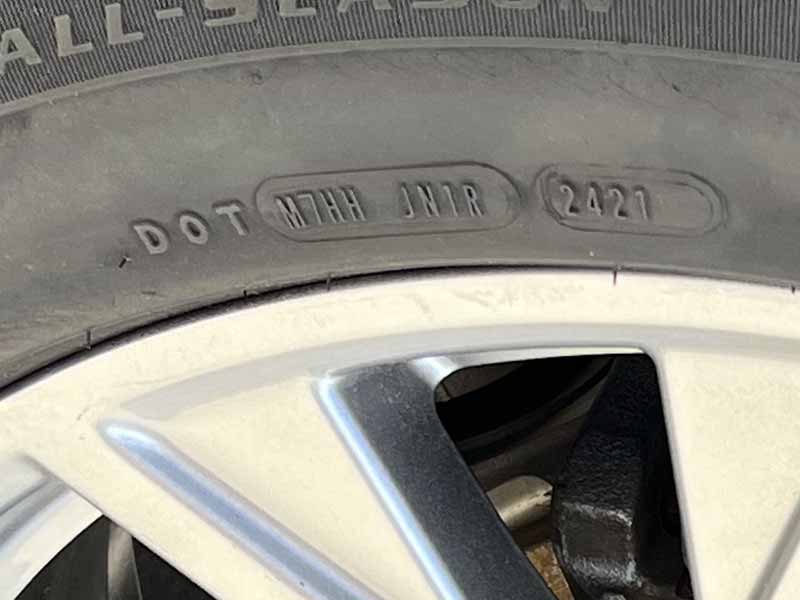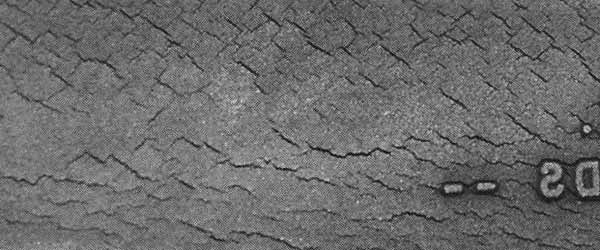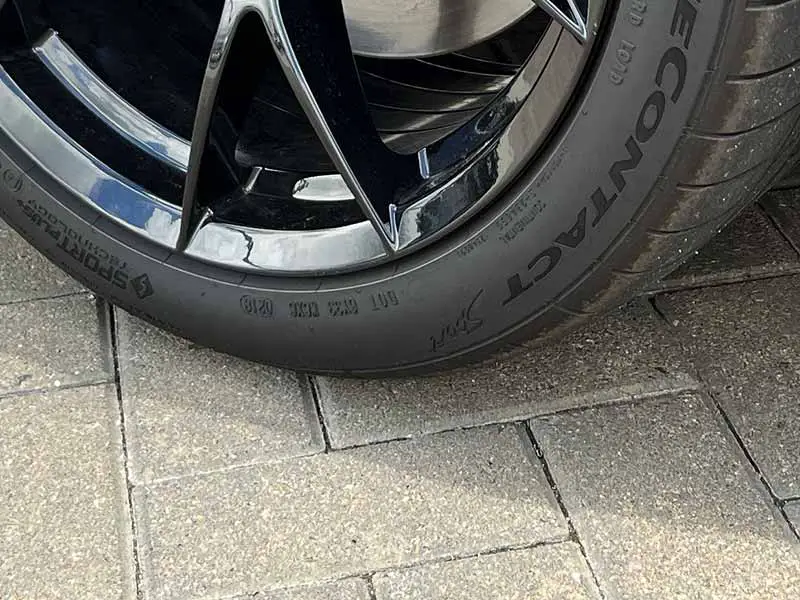New tires manufactured are required to include a DOT code called the Tire Identification Number on every tire sidewall.
The tire DOT code characters represent the tire manufacturer plant code and internal codes in addition to the tire age. The last four numbers represent the date the tire manufacturer produced the tire.
Tire Date Code
The tire manufacture date is the last four digits of the DOT Tire Identification Number located on the sidewall.
The first two digits represent the production week.
The last two numbers represent the year the tire was produced.
Tire aging causes a tire to eventually become brittle and crack. Knowing the tire age can help you identify if the tires are still under warranty or if you simply need to purchase new tires.
Let’s take a closer look

DOT Tire Identification Number (TIN)
Tires manufactured for use in the United States have a Tire Identification Number (TIN) molded or stamped into the sidewall.
This Department Of Transportation code includes information about the manufacturing date, factory, and tire itself.
This tire code acts as a serial number and is helpful when the DOT recalls tires. The portion that’s helpful to the average consumer is the manufacture date code. This allows us to determine exactly how old a tire is.
Where Is The Date Code On A Tire?
The date code on a tire is located at the end of the DOT code which is on the tire sidewall and molded or stamped near the rim. The DOT code will be on both sides of the tire. Often the date of manufacture portion of the DOT code will not be included on both sidewalls and only be included on one sidewall, usually the inner sidewall.
It’s not uncommon for people to become confused when they can’t find the final four digits of their DOT code, not realizing that it is on the opposite sidewall.
How To Read A Tire Date Code Number
There are a lot more alphanumeric digits included in the DOT tire identification number than just the date. Over the years, these codes have changed slightly.
Tire Date Code After 2000 (4 Digit)
Modern tires manufactured after the year 2000 have four digits that represent the date of manufacture. These four digits are the last four digits of the DOT code.
The first two digits represent the week of the year the tire was manufactured. The last two digits represent the year the tire was manufactured.
Example: DOT B9 EL 04EX 4118
In the example above we can see that the tire was manufactured during the 41st week of the year 2018.
Tire Date Code Before 2000 (3 Digit)
Let me first say that if you have a tire that was manufactured before the year 2000, don’t use it. This tire, no matter how good it may look or despite never being used will be far too old to be reliable and it would be extremely dangerous to attempt to drive on.
That said, you may have one of these older tires and want to know the tire age. If this is your situation, you may find the answer challenging.
Three-digit date codes include two digits to indicate the week of the year and one digit to indicate the year of manufacture. You may be beginning to see the problem here.
Example: DOT B9 EL 04EX 418
The example above tells you that the tire was manufactured the 41st week of the year and that the year ended with an 8. Unfortunately, this could have been 1998, 1988, or earlier. This makes things a little more difficult but you can likely narrow down the year based on the age of your vehicle.
How Old Can Tires Be And Still Be Safe?
It is generally recommended to discontinue using tires that are six years old or more. Tires that have been properly stored in airtight tire storage bags, kept away from direct sunlight, and protected from temperature extremes can last as long as ten years.
Most tires that reach the age of six years will usually no longer have an acceptable amount of tread depth left, but those that do usually begin showing signs of dry rot.
If tires are showing significant signs of dry rot you should consider replacing them as soon as possible.
If the tire age is more than six but less than 10 years old it’s possible to continue to use them but you should closely monitor them for signs of cracking. As the tires dry out after the antiozonant that is added to the rubber formulation begins to lose its potency, traction and safety will begin reducing dramatically.
No matter how good a tire looks, it’s always wisest to replace them once they’ve aged beyond the six year point. If you do decide to continue using them, be sure to replace them at the first signs of dry rotting.
What Is Tire Dry Rot?
Over time, the protective additives that prevent ozone from reacting with and breaking down the rubber compound in your tires will become depleted and the damage from the reaction with UV rays and ozone will begin to cause dry rotting of the tire.
Dry rot is the cracking and hardening of a tire sidewall and tread area. The rubber becomes brittle and loses its elasticity. This dramatically reduces tire performance and can lead to rapid tire wear and dramatic tire failure in the form of a tire blowout.
What Does Tire Dry Rot Look Like?
Tires with minor dry rot but plenty of tread depth left can still be safely used. Once dry rot exceeds 1/16″ of depth it should no longer be used and be properly discarded.
5 Levels Of Dry Rot
Negligible Cosmetic Sidewall Dry Rot

Minimal Sidewall Dry Rot

Minor Sidewall Dry Rot

Significant Sidewall Dry Rot

Major Sidewall Dry Rot

Tire Warranty
If you discover that your tires are beginning to dry rot but it is well before the usual six-year lifespan has elapsed, you should review the warranty documentation to see if you can make a claim for reimbursement of the value of unused tread life.
Types Of Tires To Keep In Mind
Being able to identify dry rot on tires is important to ensure that they are safe to use. Winter and summer tires often get stored in the off seasons and may last longer than the rubber.
Trailer tires are another tire type that you should pay extra attention to since they can easily be forgotten and begin showing signs of aging.
Lastly, don’t forget your spare tire. These are probably the most forgotten type of tires. When they’re needed you really don’t want them to fail on you.
Resources
Below are some links you may find helpful when learning about tires
Final Thoughts
Whether it’s summer tires, winter tires, trailer tires, or the often forgotten spare tires, tires produced prior to 6 years ago should usually be replaced.
Now that you know how to determine tire age and know what dry rot looks like, you can make an informed decision about when and whether to replace your tires when the time comes.
Tire safety is extremely important and we all want to save a little money. But pushing the tires on your car or truck beyond their safe limits can cost you a lot more than a new set of tires.
Good luck and happy motoring.





